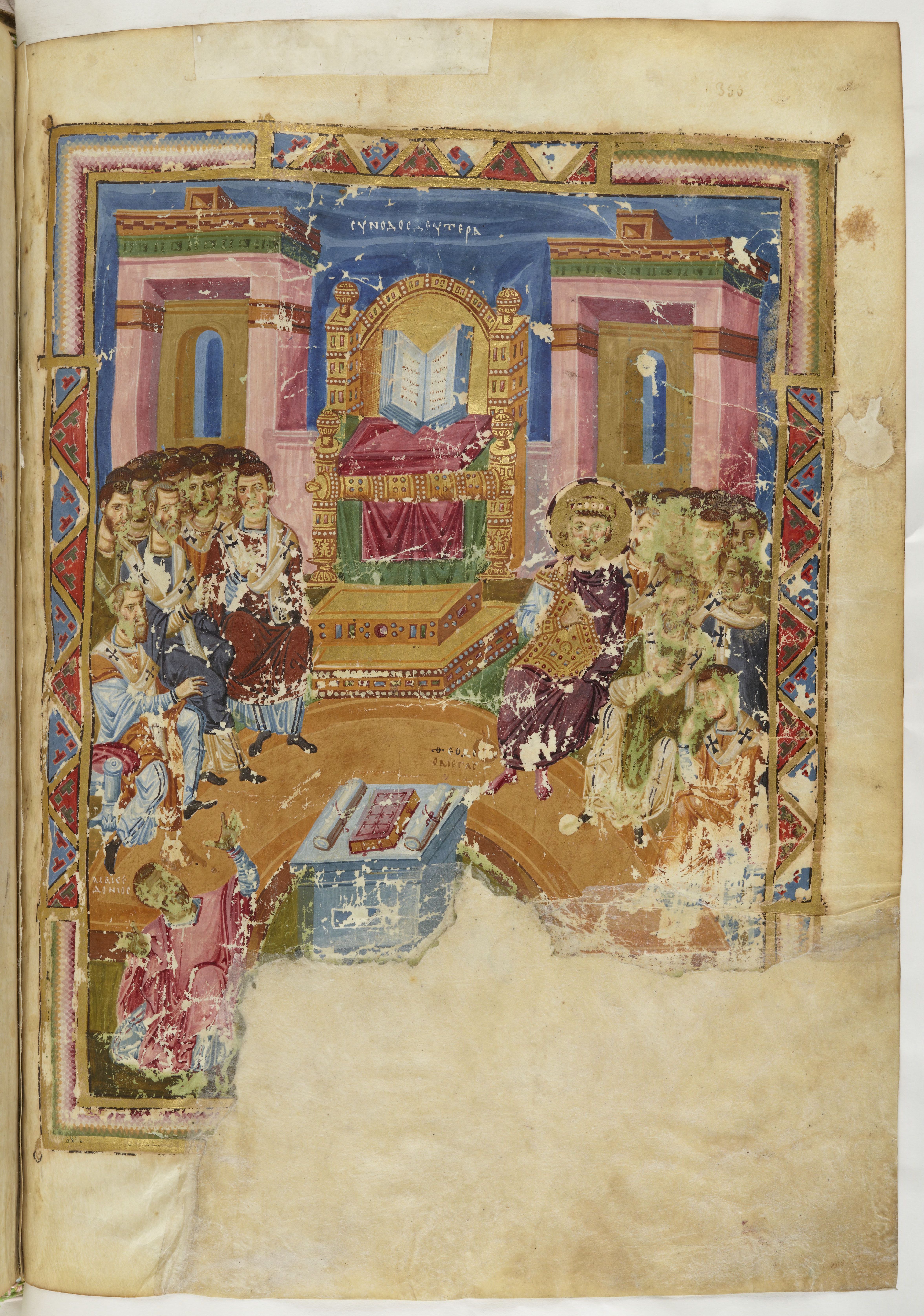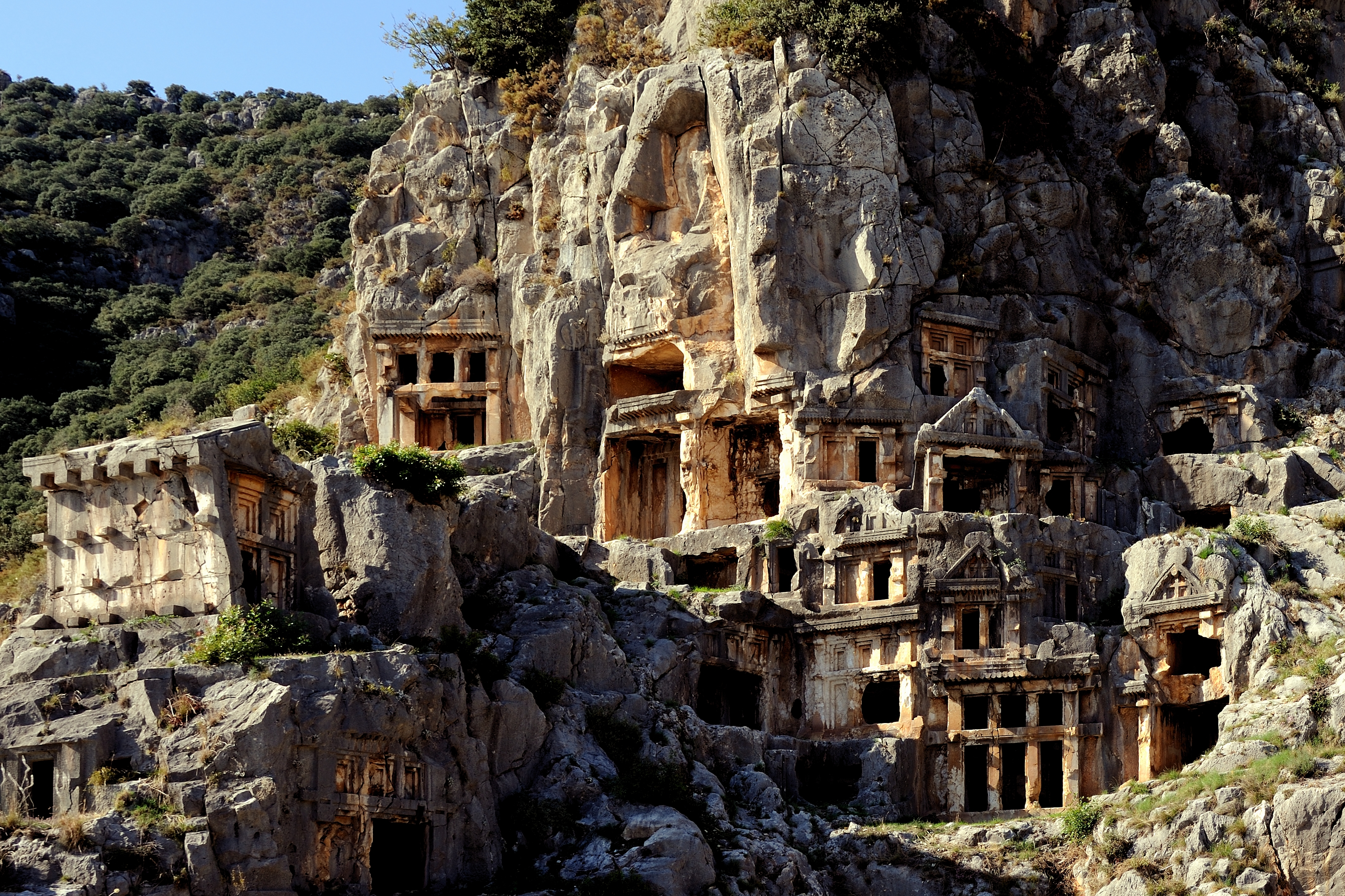|
Limyra Map
Limyra ( grc, Λίμυρα) ( xlc, 𐊈𐊚𐊎𐊒𐊕𐊁 was a small city in ancient Lycia on the southern coast of Asia Minor, on the Limyrus River ( grc, Λιμύρος). History Already flourishing in the second millennium BC, the city was one of the oldest and most prosperous in Lycia; it gradually became one of the most flourishing trade centres in the Greek world. In the 4th century BC Pericles, Dynast of Lycia supported a rebellion of satraps in Asia Minor against the ruling Persians and adopted Limyra as the capital of the Lycian League; subsequently it came under control of the Persian Empire. The Persians eventually regained rule through Mausolus, the Carian satrap at Halicarnassus. After Alexander the Great ended Persian rule, most of Lycia was ruled by Ptolemy I Soter; his son Ptolemy II Philadelphos supported the Limyrans against the invading Galatians and the inhabitants dedicated a monument, the Ptolemaion, to him in thanks. Limyra is mentioned by ... [...More Info...] [...Related Items...] OR: [Wikipedia] [Google] [Baidu] |
Antalya Province
Antalya Province ( tr, ) is located on the Mediterranean coast of south-west Turkey, between the Taurus Mountains and the Mediterranean Sea. Antalya Province is the centre of Turkey's tourism industry, attracting 30% of foreign tourists visiting Turkey. Its capital city of the same name was the world's third most visited city by number of international arrivals in 2011, displacing New York. Antalya is Turkey's biggest international sea resort. The province of Antalya corresponds to the lands of ancient Pamphylia to the east and Lycia to the west. It features a shoreline of with beaches, ports, and ancient cities scattered throughout, including the World Heritage Site Xanthos. The provincial capital is Antalya city with a population of 1,344,000. Antalya is the fastest-growing province in Turkey; with a 4.17% yearly population growth rate between years 1990–2000, compared with the national rate of 1.83%. This growth is due to a fast rate of urbanization, particularly driv ... [...More Info...] [...Related Items...] OR: [Wikipedia] [Google] [Baidu] |
Strabo
Strabo''Strabo'' (meaning "squinty", as in strabismus) was a term employed by the Romans for anyone whose eyes were distorted or deformed. The father of Pompey was called "Pompeius Strabo". A native of Sicily so clear-sighted that he could see things at great distance as if they were nearby was also called "Strabo". (; el, Στράβων ''Strábōn''; 64 or 63 BC 24 AD) was a Greek geographer, philosopher, and historian who lived in Asia Minor during the transitional period of the Roman Republic into the Roman Empire. Life Strabo was born to an affluent family from Amaseia in Pontus (in present-day Turkey) in around 64BC. His family had been involved in politics since at least the reign of Mithridates V. Strabo was related to Dorylaeus on his mother's side. Several other family members, including his paternal grandfather had served Mithridates VI during the Mithridatic Wars. As the war drew to a close, Strabo's grandfather had turned several Pontic fortress ... [...More Info...] [...Related Items...] OR: [Wikipedia] [Google] [Baidu] |
First Council Of Constantinople
The First Council of Constantinople ( la, Concilium Constantinopolitanum; grc-gre, Σύνοδος τῆς Κωνσταντινουπόλεως) was a council of Christian bishops convened in Constantinople (now Istanbul, Turkey) in AD 381 by the Roman Emperor Theodosius I. This second ecumenical council, an effort to attain consensus in the church through an assembly representing all of Christendom, except for the Western Church,Richard Kieckhefer (1989). "Papacy". ''Dictionary of the Middle Ages''. . confirmed the Nicene Creed, expanding the doctrine thereof to produce the Niceno-Constantinopolitan Creed, and dealt with sundry other matters. It met from May to July 381 in the Church of Hagia Irene and was affirmed as ecumenical in 451 at the Council of Chalcedon. Background When Theodosius ascended to the imperial throne in 380, he began on a campaign to bring the Eastern Church back to Nicene Christianity. Theodosius wanted to further unify the entire empire behind the ... [...More Info...] [...Related Items...] OR: [Wikipedia] [Google] [Baidu] |
Myra
Myra ( grc, Μύρα, ''Mýra'') was a Lycian, then ancient Greek, then Greco-Roman, then Byzantine Greek, then Ottoman town in Lycia, which became the small Turkish town of Kale, renamed Demre in 2005, in the present-day Antalya Province of Turkey. In 1923, its Greek inhabitants had been required to leave by the population exchange between Greece and Turkey, at which time its church was finally abandoned. It was founded on the river Myros ( grc, Μύρος; Turkish: ''Demre Çay''), in the fertile alluvial plain between Alaca Dağ, the Massikytos range and the Aegean Sea. History Although some scholars equate Myra with the town, of Mira, in Arzawa, there is no proof for the connection. There is no substantiated written reference for Myra before it was listed as a member of the Lycian League (168 BC–AD 43); according to Strabo (14:665), it was one of the largest towns of the alliance. The ancient Greek citizens worshiped Artemis Eleutheria, who was the protective godd ... [...More Info...] [...Related Items...] OR: [Wikipedia] [Google] [Baidu] |
Suffragan
A suffragan bishop is a type of bishop in some Christian denominations. In the Anglican Communion, a suffragan bishop is a bishop who is subordinate to a metropolitan bishop or diocesan bishop (bishop ordinary) and so is not normally jurisdictional in their role. Suffragan bishops may be charged by a metropolitan to oversee a suffragan diocese and may be assigned to areas which do not have a cathedral of their own. In the Catholic Church, a suffragan Bishops in the Catholic Church, bishop instead leads a diocese within an ecclesiastical province other than the principal diocese, the Metropolitan bishop#Roman Catholic, metropolitan archdiocese; the diocese led by the suffragan is called a suffragan diocese. Anglican Communion In the Anglican churches, the term applies to a bishop who is assigned responsibilities to support a diocesan bishop. For example, the Bishop of Jarrow is a suffragan to the diocesan Bishop of Durham. Suffragan bishops in the Anglican Communion are nearly id ... [...More Info...] [...Related Items...] OR: [Wikipedia] [Google] [Baidu] |
Notitiæ Episcopatuum
The ''Notitiae Episcopatuum'' (singular: ''Notitia Episcopatuum'') are official documents that furnish Eastern countries the list and hierarchical rank of the metropolitan and suffragan bishoprics of a church. In the Roman Church (the -mostly Latin Rite- 'Western Patriarchate' of Rome), archbishops and bishops were classed according to the seniority of their consecration, and in Africa according to their age. In the Eastern patriarchates, however, the hierarchical rank of each bishop was determined by the see he occupied. Thus, in the Patriarchate of Constantinople, the first Metropolitan was not the longest ordained, but whoever happened to be the incumbent of the See of Caesarea; the second was the Archbishop of Ephesus, and so on. In every ecclesiastical province, the rank of each Suffragan (see) was thus determined, and remained unchanged unless the list was subsequently modified. The hierarchical order included first of all the Patriarch; then the 'greater Metropolitans', ... [...More Info...] [...Related Items...] OR: [Wikipedia] [Google] [Baidu] |
Segmental Arch
A segmental arch is a type of arch with a circular arc of less than 180 degrees. It is sometimes also called a scheme arch. The segmental arch is one of the strongest arches because it is able to resist thrust. To prevent failure, a segmental arch must have a rise that is equal to at least one-eighth the width of the span. Segmental arches with a rise that is less than one-eighth of the span width must have a permanent support or frame beneath the arch to prevent failure. As far as is known, the ancient Romans were the first to develop the segmental arch. The closed-spandrel Pont-Saint-Martin bridge in the Aosta Valley in Italy dates to 25 BC. The first open-spandrel segmental arch bridge is the Anji Bridge over the Xiao River in Hebei Province in China China, officially the People's Republic of China (PRC), is a country in East Asia. It is the world's most populous country, with a population exceeding 1.4 billion, slightly ahead of India. China spans the equivalent of ... [...More Info...] [...Related Items...] OR: [Wikipedia] [Google] [Baidu] |
Bridge Near Limyra
The Bridge near Limyra (in tr, Kırkgöz Kemeri, "Bridge of the Forty Arches") is a late Roman bridge in Lycia, in modern south-west Turkey, and one of the oldest segmented arch bridges in the world. Located near the ancient city of Limyra, it is the largest civil engineering structure of antiquity in the region, spanning the Alakır Çayı river over a length of on 26 segmental arches. These arches, with a span-to-rise ratio of 5.3:1, give the bridge an unusually flat profile, and were unsurpassed as an architectural achievement until the late Middle Ages. Today, the structure is largely buried by river sediments and surrounded by greenhouses. Despite its unique features, the bridge remains relatively unknown, and only in the 1970s did researchers from the Istanbul branch of the German Archaeological Institute carry out field examinations on the site. Field examinations No information on the bridge survives from ancient sources. The first descriptions appear in European ... [...More Info...] [...Related Items...] OR: [Wikipedia] [Google] [Baidu] |
Colonnade
In classical architecture, a colonnade is a long sequence of columns joined by their entablature, often free-standing, or part of a building. Paired or multiple pairs of columns are normally employed in a colonnade which can be straight or curved. The space enclosed may be covered or open. In St. Peter's Square in Rome, Bernini's great colonnade encloses a vast open elliptical space. When in front of a building, screening the door (Latin ''porta''), it is called a portico. When enclosing an open court, a peristyle. A portico may be more than one rank of columns deep, as at the Pantheon in Rome or the stoae of Ancient Greece. When the intercolumniation is alternately wide and narrow, a colonnade may be termed "araeosystyle" (Gr. αραιος, "widely spaced", and συστυλος, "with columns set close together"), as in the case of the western porch of St Paul's Cathedral and the east front of the Louvre. History Colonnades have been built since ancient times and inter ... [...More Info...] [...Related Items...] OR: [Wikipedia] [Google] [Baidu] |
Rhodiapolis
Rhodiapolis ( grc, Ῥοδιάπολις), also known as Rhodia (Ῥοδία) and Rhodiopolis (Ῥοδιόπολις), was a city in ancient Lycia. Today it is located on a hill northwest of the modern town Kumluca in Antalya Province, Turkey. Rhodiapolis stands out as a successfully planned, very compact Roman city in limited and difficult terrain with a uniquely intricate and packed layout of buildings without leaving empty space other than the streets. On the sloping terrain, terraces needed for urban fabric were formed mostly by cisterns, a clever solution that satisfied water demand while also creating flat areas for construction. History It is called Rhodia by Ptolemy (V, 3) and Stephanus Byzantius; Rhodiapolis on its coins and inscriptions; Rhodiopolis by Pliny the Elder, who locates it in the mountains to the north of Corydalla. The city was considered to have been founded by colonists from Rhodes; the name Rhodiapolis means ''Rhodian City'' in English. Rhodiapol ... [...More Info...] [...Related Items...] OR: [Wikipedia] [Google] [Baidu] |
Opramoas
Opramoas was an important civic benefactor in the 2nd century CE. He is the best known ancient euergete. He was a magnate from the small Lycian town of Rhodiapolis (southern Anatolia, in modern Turkey). His activities are recorded in extensive Greek inscriptions on the walls of his mausoleum at Rhodiapolis. "...apart from his gifts of games and a mass of civic buildings, we have recently found him offering to pay for the primary schooling of all the citizen-children at Xanthus, boys and girls alike"..."he gave funds for burial to people in need and paid the dowries of poor families' daughters" R. Lane Fox, ''Pagans and Christians'', London, 1986, p. 60 He is mentioned in the French author Marguerite Yourcenar's novel ''Memoirs of Hadrian ''Memoirs of Hadrian'' (french: link=no, Mémoires d'Hadrien) is a novel by the Belgian-born French writer Marguerite Yourcenar about the life and death of the Roman Emperor Hadrian. First published in France in French in 1951 as ''Mémoires ... [...More Info...] [...Related Items...] OR: [Wikipedia] [Google] [Baidu] |
Velleius Paterculus
Marcus Velleius Paterculus (; c. 19 BC – c. AD 31) was a Roman historian, soldier and senator. His Roman history, written in a highly rhetorical style, covered the period from the end of the Trojan War to AD 30, but is most useful for the period from the death of Caesar in 44 BC to the death of Augustus in AD 14. Biography Few details of Velleius' life are known with certainty; even his praenomen is uncertain. Priscian, the only ancient author to mention it, calls him "Marcus", but the title page of the '' editio princeps'', printed in 1520, calls him "Publius", probably due to confusion with a Publius Velleius mentioned in Tacitus. Elsewhere, the same volume calls him ''Gaius''. Some modern writers use the latter name, based on an inscription found on a milestone at El Harrouch in Algeria, once part of Roman Numidia;''Encyclopædia Britannica'', 1911 ed., vol. 27, p. 979 ("Velleius Paterculus, Marcus"). but the inscription identifies this Gaius Velleius Paterculus as '' l ... [...More Info...] [...Related Items...] OR: [Wikipedia] [Google] [Baidu] |







.jpg)
.jpg)